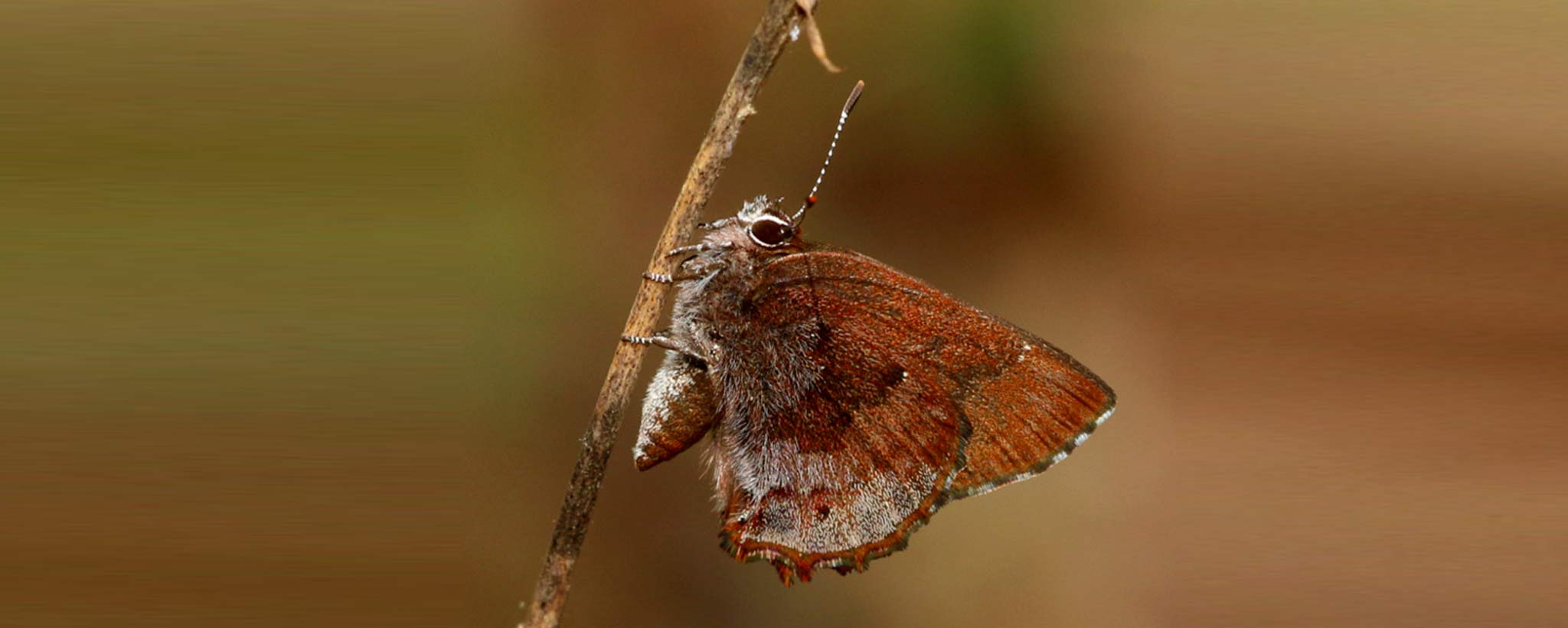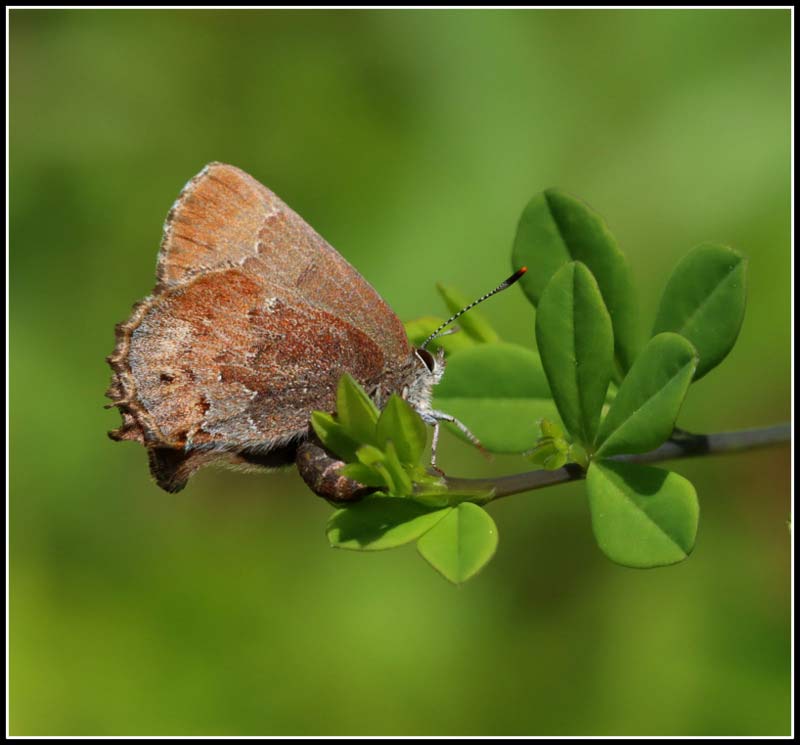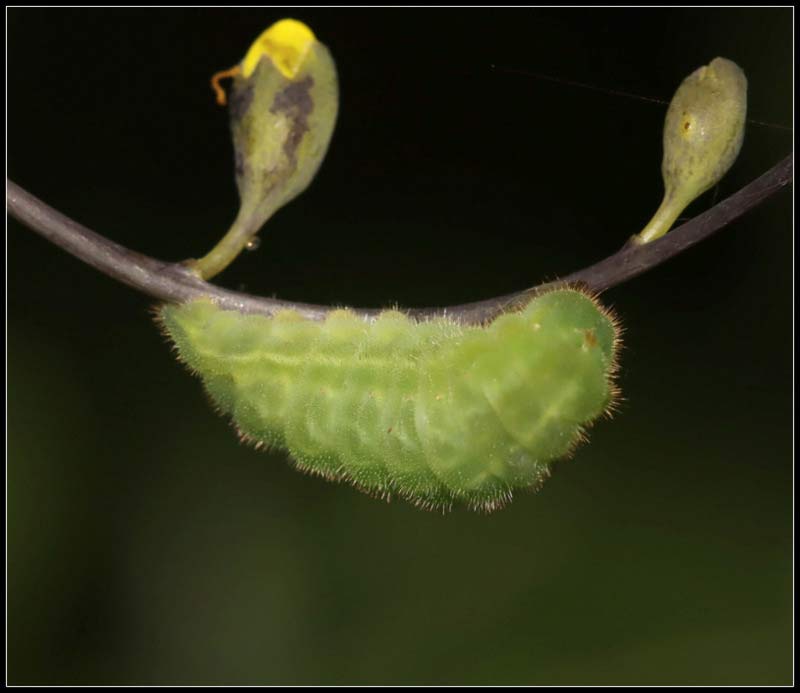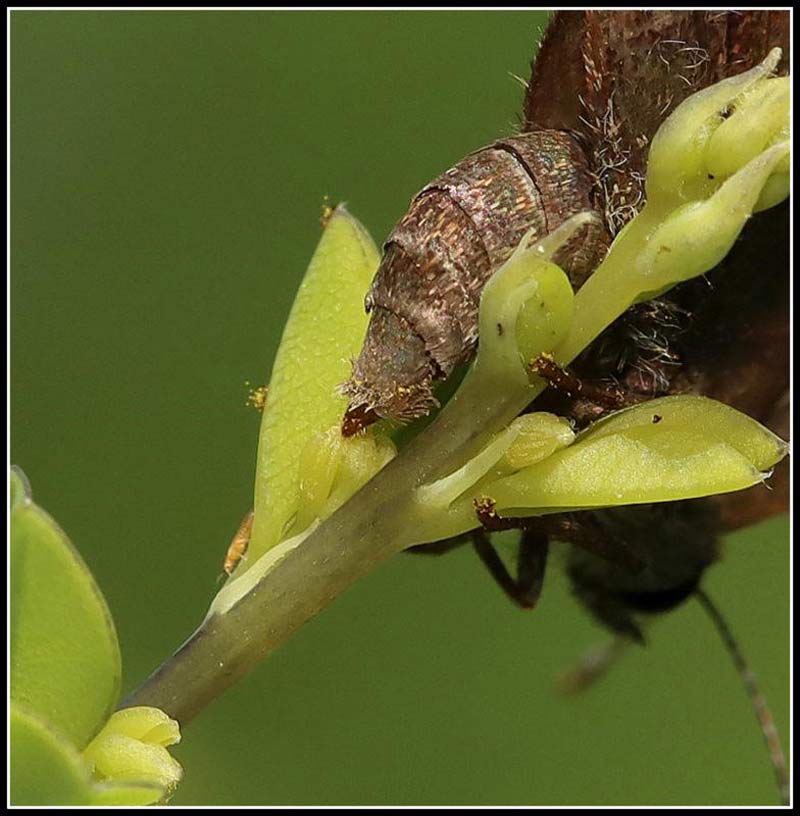Articles

Into Elfin Territory
A father-son duo’s discovery of a rare butterfly species leads the way to conservation efforts.
An endangered butterfly known as the frosted elfin flits beneath a secluded transmission line in North Carolina's Nantahala National Forest.
Federal botanists say the obscure insect's mountain home is on the grassy Tennessee Valley Authority right of way because of a pea-plant species known as yellow wild indigo.
The two species are always found together because the butterfly requires the plant to survive.
For the frosted elfin, which is known for its thin white shadow that "frosts" its brown-colored wings, wild yellow indigo is the only suitable habitat for the insect to lay eggs and attach a cocoon for hatching larvae.
This unique process occurs during a two-week window in the summer when the plant blooms.
"You see crazy-cool weird insects where you find crazy-cool weird plants," U.S. Forest Service botanist Maria Dunlavey said. "Because that area has been kept open, it's preserved a lot of unique habitats that we don't have a lot left off."
But knowing which species came first—the elfin or the indigo—is an entangled chicken-or-the-egg debate that predates European settlement, when much of the Southeast looked like the unmolested grasslands found on TVA right of ways.
"The way our landscape looks now shows a lot of evidence of what happens if no one is here to look after these biological treasures," Dunlavey said. "We've got to be out there learning how we can better take care of these habitats … to better take
care of these rare and endangered species."

Photo courtesy of Julius Basham.
From Birding to Butterflying
The discovery of the rare frosted elfin population in Nantahala National Forest wouldn't have been possible without Tennessee naturalist Julius Basham.
Basham never wanted to be a butterfly expert, but when his father suffered a stroke 20 years ago, the two saw butterflying as an excuse to spend more time together.
Before the incident, Basham's father was a world-traveled birder who logged sightings of more than 700 feathered fliers in 1969. The Big Year feat required him to trek from Canada to the Caribbean islands and stood as a record for 31 years.
"In 10 seconds, all that was gone," Basham said. "With the stroke, Dad couldn't do it anymore, so that's when he decided to take up butterflying."
Basham said at first, he was self-conscious about trapezing through the woods with a pair of binoculars in search of dainty insects and pretty flowers. With birding, tall trees, zoom lenses, and flights to exotic places felt more masculine.
"I didn't want to be caught dead doing it, but I knew it was important to my dad," Basham said. "To spend more time with him, I decided to start helping."

Photo courtesy of Julius Basham.
Something Special
Then, one day, on a lonely stretch of federal land off Joe Brown Highway, the duo made a startling discovery.
The highway doesn't have asphalt and probably hasn't seen a painted line since TVA surveyors first cleared the path for the right of way during the construction of Hiwassee Dam in 1936.
It's more of a deer trail with two washed-out ruts that twist for miles through the Blue Ridge Mountains. Communication is limited to satellite phones and two-way radios. Unless a person wants to destroy a sedan or risk being stranded, the unkept path makes a spare tire and a four-wheel drive a requirement.
Basham found the frosted elfin colony in 2017, but the remoteness of the butterfly's whereabouts was not what made the event so memorable. Instead, it was what he heard as he strolled down the road less traveled.
"You found something special. I can tell by the way you're walking," Basham's father said from his pickup.
Basham smiled. When he reached the truck, he scrolled through a few stills on his digital camera.
He showed his father the moments his microlens captured when the elusive insect fluttered across the right of way and landed on a yellow wild indigo plant for a 30-minute photo shoot. His dad's reaction proved to be priceless.
"I knew you were gonna find that sucker eventually."
A Survey in the Dark
Basham traveled to the spot for several years after the initial encounter. Still, it wasn't until this year that he led a party of biologists into elfin territory for an official count.
To better determine the size of the adult butterfly population, the group conducted a larva survey at night.
Using LED black lights to illuminate the butterfly's larvae, Dunlavey and TVA botanist Adam Dattilo found 115 caterpillars and 81 host plants across 7 acres of TVA right of way.
"This would have never happened without Julius," Dattilo said. "By helping us conduct this survey, he really put in motion a true conservation effort to save both the frosted elfin and its host plant."
Getting it Right
Like Dunlavey, Dattilo sees the discovery of the frosted elfin population as an opportunity for both the Forest Service and TVA to restore more of the region's landscape to natural grassland. For him, the need is as obvious as a summer sashay down the edge of any TVA right of way.

Photo courtesy of Julius Basham.
"All you have to do is look," he said. "It doesn't matter where you go, and there are up to 10 times more pollinators flying on the right of way than anywhere near the adjacent habitat."
And for species like yellow wild indigo and the frosted elfin, that's a problem.
"Life that only exists on a right of way is on a razor's edge, and this is our last shot at getting it right," Dattilo said. "This is why we want to figure out a way to expand this habitat."
This is not an easy task when the majority of the Southeast's open land is a residential lawn, golf course, livestock pasture, or a row-cropped expanse that's planted annually. With so much ground privately owned, Dattilo and Dunlavey point to federal lands as the obvious place to rebuild the region's lost grasslands and achieve the goals of the Southeastern Grasslands Initiative.
Dattilo said the survey results would help both TVA and the Forest Service as they collaborate to expand the butterfly's habitat beyond the right of way. And for Basham, that's all that matters.
"My greatest desire is that the bug is protected and remains unmolested," Basham said.
Explore
Learn more about TVA’s sustainability efforts and recreational opportunities.